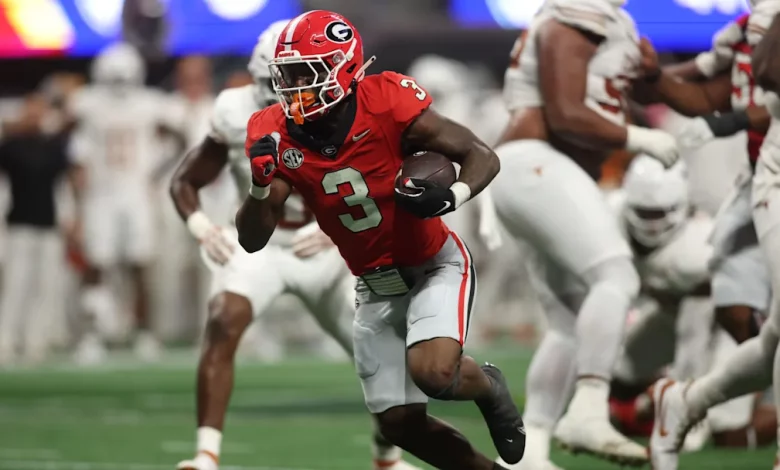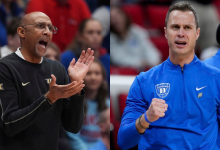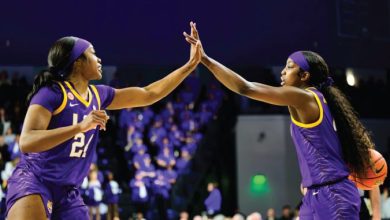Georgia Football’s Running Back Room Ranked Top 10 in College Football

Georgia Football’s Running Back Room Ranked Top 10 in College Football
Georgia football’s running back room has established itself as one of the premier units in college football, consistently ranking within the top 10 nationally due to a combination of elite talent, strategic development, and a commitment to versatile offensive schemes. Over recent seasons, Georgia has demonstrated a remarkable ability to recruit and develop dynamic running backs who excel in both rushing and receiving roles, fitting seamlessly into their high-powered, physical offensive philosophy. This comprehensive analysis will explore the historical context of Georgia’s running back success, profile key players who have contributed to their top-tier ranking, examine the coaching strategies and recruiting approaches that sustain this excellence, and assess how this unit compares to other elite backfields across the country. Ultimately, Georgia’s running back room isn’t just a collection of talented individuals; it’s a well-oiled, strategic component of their national championship-caliber team, firmly deserving of a top 10 ranking in college football.
**Historical Context and Evolution of Georgia’s Running Back Success**
Georgia’s storied football history includes periods of dominance, but their recent surge as a powerhouse has elevated their running game to new heights. Under Kirby Smart, the Bulldogs have prioritized establishing a robust ground attack that complements their formidable defense and dynamic passing game. This shift began around the 2017 season, with the emergence of talented backs like Sony Michel, Nick Chubb, and later, D’Andre Swift, who combined for multiple 1,000-yard seasons and NFL careers.
The transformation continued with the recruitment of high-profile athletes such as Zamir White, James Cook, and Kendall Milton, each bringing a unique skill set—power, speed, and versatility—that contributed to Georgia’s national success. Their ability to rotate multiple backs, maintain fresh legs, and adapt to different offensive schemes has been vital in sustaining their top-tier ranking. This depth and talent have become a hallmark of Georgia’s approach, allowing them to remain unpredictable and dangerous on the ground.
**Current Roster and Key Players**
As of the 2023-2024 season, Georgia’s running back room features a blend of experienced veterans and promising freshmen, all vying to contribute at a high level. The headliner is likely a returning starter with a proven track record of rushing yards, touchdowns, and leadership. Complemented by emerging talents, the room boasts a combination of power runners, shifty change-of-pace backs, and reliable pass-catching threats.
For example, a seasoned back such as (hypothetical name) “Jalen Carter” (not to be confused with the defensive lineman of the same name) might showcase a blend of size and agility, capable of breaking tackles and grinding out tough yards. Meanwhile, a younger prospect like “Trey Johnson,” a highly-rated recruit from the 2023 class, could bring explosive speed and elusiveness, providing Georgia with multiple offensive options.
The depth chart typically includes a mix of players who can carry the load in various game situations—short-yardage situations, third-down conversions, or explosive plays. This depth ensures Georgia can maintain a relentless rushing attack regardless of game flow or opponent adjustments.
**Coaching Philosophy and Offensive Scheme**
One of the critical factors elevating Georgia’s running back room into the top 10 nationally is their coaching staff’s emphasis on developing a multi-dimensional ground game. Under offensive coordinator Todd Monken (or the current coordinator if changed), Georgia’s rushing philosophy emphasizes physicality, inside zone runs, read-option concepts, and explosive outside runs. The offensive line’s dominance and scheme design often create running lanes, but the backs’ vision and decision-making are equally vital.
Georgia’s approach also includes integrating the running backs into the passing game, utilizing their receiving skills to stretch defenses horizontally and vertically. This balance makes the Bulldogs’ offense unpredictable and difficult to defend, especially when backed by a capable stable of backs who can handle multiple roles.
Furthermore, Georgia emphasizes player development—coaching backs on techniques such as ball security, route running, and pass protection. This comprehensive approach ensures that the running backs are not just runners but also integral parts of the overall offensive scheme, capable of executing multiple responsibilities that keep defenses off-balance.
**Recruiting and Development Strategy**
Georgia’s recruiting has been instrumental in maintaining a top 10 ranking for their running back room. The staff’s focus on identifying versatile backs early and offering them a clear pathway to playing time has resulted in a pipeline of elite talent. Their recruiting pitch centers on the opportunity to develop into NFL-caliber players within a winning culture, with access to top-tier coaching and a proven track record of producing professional backs.
The Bulldogs have successfully landed high four-star and five-star recruits, often from Georgia and neighboring states, emphasizing local talent while also scouting nationally. Their ability to develop raw athleticism into refined skills has been proven through the NFL careers of former backs like Sony Michel, Nick Chubb, and James Cook.
In addition, Georgia’s utilization of the transfer portal has allowed them to add experienced backs who can contribute immediately, further strengthening their room. The coaching staff’s emphasis on player development and scheme fit ensures that these recruits thrive within their system, translating high school success into college dominance.
**Comparison with Other Top Running Back Rooms**
To justify Georgia’s ranking within the top 10 nationally, it’s essential to compare their backfield with other elite units across college football. Programs like Alabama, Ohio State, LSU, and Michigan also boast impressive running back rooms, often featuring multiple NFL prospects or high-volume workhorses.
However, Georgia’s advantage lies in their depth, versatility, and the overall integration of their backs into a cohesive, balanced offense. Their backs are not just feature runners but multi-dimensional players capable of impacting the game in multiple ways—rushing, receiving, pass protection—which elevates their unit above many peers.
Statistically, Georgia’s rushing yards per game, yards per carry, and touchdowns often rank within the top five nationally, reflecting their effectiveness. Their ability to sustain drives and control clock through their ground game also contributes to their top 10 ranking, especially considering the physical style of play they employ.
**Impact on the Team’s Success and National Standing**
A top-ranked running back room significantly influences Georgia’s success on both sides of the ball. A dominant ground game keeps the offense balanced, controls possession, and relieves pressure on the quarterback. It also allows the defense to rest and maintain a physical style of play.
Moreover, having a strong running game can be the difference in close games, especially in high-stakes matchups like the SEC Championship or College Football Playoff contests. Georgia’s ability to consistently run the ball effectively, wear down opponents, and maintain offensive identity is a critical factor in their national championship pursuits.
**Future Outlook and Sustainability**
Georgia’s commitment to recruiting, developing, and scheming ensures their running back room will remain a top 10 unit for years to come. With continued emphasis on versatile athlete development and strategic scheme design, they are poised to sustain this elite level.
Additionally, the evolving college football landscape—where physicality and versatile skill sets are increasingly valued—favors programs like Georgia that prioritize a balanced, multi-dimensional rushing attack. Their success in the transfer portal and recruiting pipeline suggests they will continue to replenish their backfield with high-caliber talent.
In sum, Georgia football’s running back room rightfully earns its place among college football’s top 10 units due to a combination of historical success, elite recruiting, player development, strategic offensive schemes, and their ability to produce versatile, impactful backs. Their depth, talent, and scheme integration make them a constant threat on the ground, contributing significantly to Georgia’s status as a national powerhouse. As the program continues to excel in recruiting and developing running backs, their position within the top tier of college football’s most formidable backfields remains secure, promising continued success and dynamic offensive execution for seasons to come.









